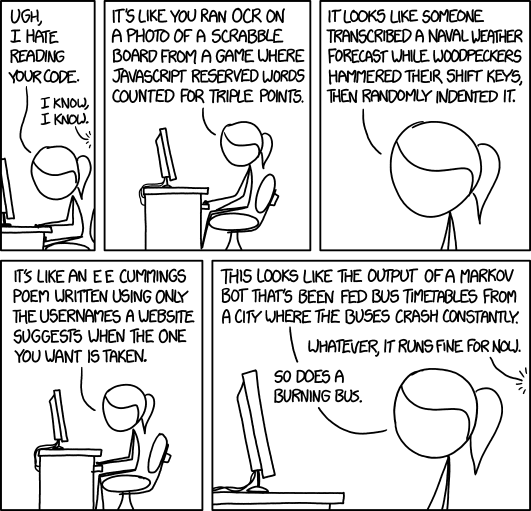I've had this experience one to many times. And in self defence my code doesn't look ugly even when I've just written it; I don't have to come back and "clean it up".
I am exploring two new languages and a Distributed VCS. Go and Node.js. Go has Goroutines (sorta evented, sorta threaded) and Node.js is intrinsically event driven. Git is a VCS born of Linus Torvalds mind (tried Mercuria[hg] but git has won me and the majority over).
Sunday, June 19, 2016
Wednesday, February 10, 2016
How quickly I've picked up Go
I started writing Go with the cononical hello_world.go program on Jan 11, 2016.
I wrote a working B+Tree implementation in Go on Feb 11, 2016.
So I would say it took me 4 weeks to become "productive" in Go. I still need to use the Playground to work out small issues with Go syntax every now and again.
I wrote a working B+Tree implementation in Go on Feb 11, 2016.
So I would say it took me 4 weeks to become "productive" in Go. I still need to use the Playground to work out small issues with Go syntax every now and again.
Sunday, February 7, 2016
Subscribe to:
Comments (Atom)
